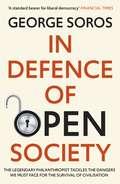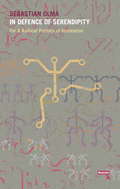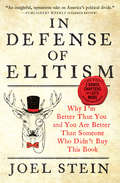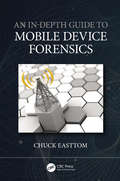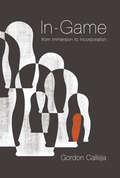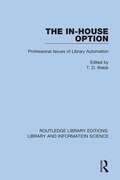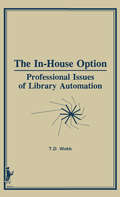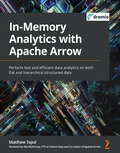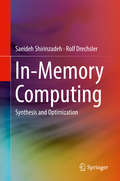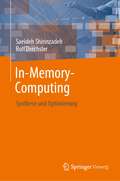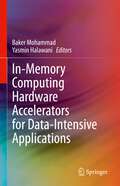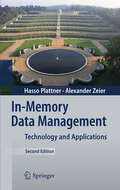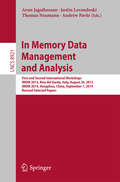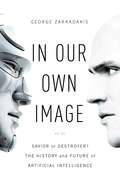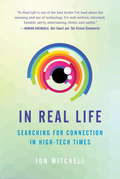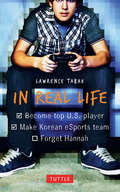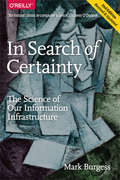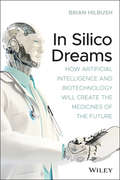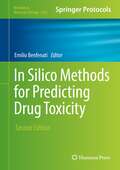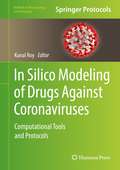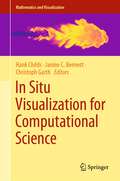- Table View
- List View
In Defence of Open Society: The Legendary Philanthropist Tackles the Dangers We Must Face for the Survival of Civilisation
by George SorosGeorge Soros is among the world's most prominent public figures. He is one of the history's most successful investors and his philanthropy, led by the Open Society Foundations, has donated over $14 billion to promote democracy and human rights in more than 120 countries. But in recent years, Soros has become the focus of sustained right-wing attacks in the United States and around the world based on his commitment to open society, progressive politics and his Jewish background. In this brilliant and spirited book, Soros offers a compendium of his philosophy, a clarion call-to-arms for the ideals of an open society: freedom, democracy, rule of law, human rights, social justice, and social responsibility as a universal idea. In this age of nationalism, populism, anti-Semitism, and the spread of authoritarian governments, Soros's mission to support open societies is as urgent as it is important.
In Defence of Serendipity
by Seb OlmaIn Defence of Serendipity is a lively and buccaneering work of investigative philosophy, treating the origins of "serendipity, accident and sagacity", both as riddles and philosophical concepts that can be put to a future political use. Taking in Aristotle, LSD, Tony Blair and techno-mysticism, Olma challenges the prevailing faith in the benevolence of digital technology and the illegitimate equation of innovation and entrepreneurship, arguing instead that we must take responsibility for the care of society's digital infrastructure, and prevent its degeneration into an apparatus of marketing and finance. For although there is nothing wrong with marketing and finance per se, if they alone lead technological development, free of any discretionary political interference, the freedom to be exploited will be as much a part of the future as our ability to intervene freely in our lives, will be a thing of the past.
In Defense of Elitism: Why I'm Better Than You and You're Better Than Someone Who Didn't Buy This Book
by Joel SteinFrom Thurber finalist and former star TIME columnist Joel Stein comes a "brilliant exploration" (Walter Isaacson) of America's political culture war and a hilarious call to arms for the elite."I can think of no one more suited to defend elitism than Stein, a funny man with hands as delicate as a baby full of soft-boiled eggs."--Jimmy Kimmel, host of Jimmy Kimmel Live!The night Donald Trump won the presidency, our author Joel Stein, Thurber Prize finalist and former staff writer for Time Magazine, instantly knew why. The main reason wasn't economic anxiety or racism. It was that he was anti-elitist. Hillary Clinton represented Wall Street, academics, policy papers, Davos, international treaties and the people who think they're better than you. People like Joel Stein. Trump represented something far more appealing, which was beating up people like Joel Stein. In a full-throated defense of academia, the mainstream press, medium-rare steak, and civility, Joel Stein fights against populism. He fears a new tribal elite is coming to replace him, one that will fend off expertise of all kinds and send the country hurtling backward to a time of wars, economic stagnation and the well-done steaks doused with ketchup that Trump eats. To find out how this shift happened and what can be done, Stein spends a week in Roberts County, Texas, which had the highest percentage of Trump voters in the country. He goes to the home of Trump-loving Dilbert cartoonist Scott Adams; meets people who create fake news; and finds the new elitist organizations merging both right and left to fight the populists. All the while using the biggest words he knows.
An In-Depth Guide to Mobile Device Forensics
by Chuck EasttomMobile devices are ubiquitous; therefore, mobile device forensics is absolutely critical. Whether for civil or criminal investigations, being able to extract evidence from a mobile device is essential. This book covers the technical details of mobile devices and transmissions, as well as forensic methods for extracting evidence. There are books on specific issues like Android forensics or iOS forensics, but there is not currently a book that covers all the topics covered in this book. Furthermore, it is such a critical skill that mobile device forensics is the most common topic the Author is asked to teach to law enforcement. This is a niche that is not being adequately filled with current titles. An In-Depth Guide to Mobile Device Forensics is aimed towards undergraduates and graduate students studying cybersecurity or digital forensics. It covers both technical and legal issues, and includes exercises, tests/quizzes, case studies, and slides to aid comprehension.
In-Game: From Immersion to Incorporation
by Gordon CallejaAn investigation of what makes digital games engaging to players and a reexamination of the concept of immersion.Digital games offer a vast range of engaging experiences, from the serene exploration of beautifully rendered landscapes to the deeply cognitive challenges presented by strategic simulations to the adrenaline rush of competitive team-based shoot-outs. Digital games enable experiences that are considerably different from a reader's engagement with literature or a moviegoer's experience of a movie. In In-Game, Gordon Calleja examines what exactly it is that makes digital games so uniquely involving and offers a new, more precise, and game-specific formulation of this involvement. One of the most commonly yet vaguely deployed concepts in the industry and academia alike is immersion—a player's sensation of inhabiting the space represented onscreen. Overuse of this term has diminished its analytical value and confused its meaning, both in analysis and design. Rather than conceiving of immersion as a single experience, Calleja views it as blending different experiential phenomena afforded by involving gameplay. He proposes a framework (based on qualitative research) to describe these phenomena: the player involvement model. This model encompasses two constituent temporal phases—the macro, representing offline involvement, and the micro, representing moment-to-moment involvement during gameplay—as well as six dimensions of player involvement: kinesthetic, spatial, shared, narrative, affective, and ludic. The intensified and internalized experiential blend can culminate in incorporation—a concept that Calleja proposes as an alternative to the problematic immersion. Incorporation, he argues, is a more accurate metaphor, providing a robust foundation for future research and design.
The In-House Option: Professional Issues of Library Automation (Routledge Library Editions: Library and Information Science #47)
by T. D. WebbThis book, first published in 1987, expertly addresses the impact of automation on the profession of librarianship in terms of its practitioners, standards, and underlying philosophy. In clear and understandable language, it focuses - with practical examples - on the important decision of the location of the computer - at the library site or a remote automation centre. Designed to be a practical guide to host computer location, this articulate book also addresses the broad professional issues of library automation.
The In-House Option: Professional Issues of Library Automation (Routledge Library Editions: Library And Information Science Ser. #47)
by Terry D WebbHere is a timely book that expertly addresses the current impact of automation on the profession of librarianship in terms of its practitioners, standards, and underlying philosophy. In clear and understandable language, author T. D. Webb focuses his discussion--with practical examples--on the important decision of the location of the computer--at the library site or a remote automation center. Designed to be a practical guide to host computer location, this articulate book also addresses the broad professional issues of library automation.
In-Memory Analytics with Apache Arrow: Perform fast and efficient data analytics on both flat and hierarchical structured data
by Matthew Topol Wes McKinneyProcess tabular data and build high-performance query engines on modern CPUs and GPUs using Apache Arrow, a standardized language-independent memory format, for optimal performanceKey FeaturesLearn about Apache Arrow's data types and interoperability with pandas and ParquetWork with Apache Arrow Flight RPC, Compute, and Dataset APIs to produce and consume tabular dataReviewed, contributed, and supported by Dremio, the co-creator of Apache ArrowBook DescriptionApache Arrow is designed to accelerate analytics and allow the exchange of data across big data systems easily.In-Memory Analytics with Apache Arrow begins with a quick overview of the Apache Arrow format, before moving on to helping you to understand Arrow's versatility and benefits as you walk through a variety of real-world use cases. You'll cover key tasks such as enhancing data science workflows with Arrow, using Arrow and Apache Parquet with Apache Spark and Jupyter for better performance and hassle-free data translation, as well as working with Perspective, an open source interactive graphical and tabular analysis tool for browsers. As you advance, you'll explore the different data interchange and storage formats and become well-versed with the relationships between Arrow, Parquet, Feather, Protobuf, Flatbuffers, JSON, and CSV. In addition to understanding the basic structure of the Arrow Flight and Flight SQL protocols, you'll learn about Dremio's usage of Apache Arrow to enhance SQL analytics and discover how Arrow can be used in web-based browser apps. Finally, you'll get to grips with the upcoming features of Arrow to help you stay ahead of the curve.By the end of this book, you will have all the building blocks to create useful, efficient, and powerful analytical services and utilities with Apache Arrow.What you will learnUse Apache Arrow libraries to access data files both locally and in the cloudUnderstand the zero-copy elements of the Apache Arrow formatImprove read performance by memory-mapping files with Apache ArrowProduce or consume Apache Arrow data efficiently using a C APIUse the Apache Arrow Compute APIs to perform complex operationsCreate Arrow Flight servers and clients for transferring data quicklyBuild the Arrow libraries locally and contribute back to the communityWho this book is forThis book is for developers, data analysts, and data scientists looking to explore the capabilities of Apache Arrow from the ground up. This book will also be useful for any engineers who are working on building utilities for data analytics and query engines, or otherwise working with tabular data, regardless of the programming language. Some familiarity with basic concepts of data analysis will help you to get the most out of this book but isn't required. Code examples are provided in the C++, Go, and Python programming languages.
In-Memory Computing: Synthesis and Optimization
by Saeideh Shirinzadeh Rolf DrechslerThis book describes a comprehensive approach for synthesis and optimization of logic-in-memory computing hardware and architectures using memristive devices, which creates a firm foundation for practical applications. Readers will get familiar with a new generation of computer architectures that potentially can perform faster, as the necessity for communication between the processor and memory is surpassed. The discussion includes various synthesis methodologies and optimization algorithms targeting implementation cost metrics including latency and area overhead as well as the reliability issue caused by short memory lifetime.Presents a comprehensive synthesis flow for the emerging field of logic-in-memory computing;Describes automated compilation of programmable logic-in-memory computer architectures;Includes several effective optimization algorithm also applicable to classical logic synthesis;Investigates unbalanced write traffic in logic-in-memory architectures and describes wear leveling approaches to alleviate it.
In-Memory-Computing: Synthese und Optimierung
by Saeideh Shirinzadeh Rolf DrechslerDieses Buch beschreibt einen umfassenden Ansatz für die Synthese und Optimierung von Logic-in-Memory-Computing-Hardware und -Architekturen mit memristiven Bauelementen, der eine solide Grundlage für praktische Anwendungen schafft. Die Leser werden mit einer neuen Generation von Computerarchitekturen vertraut gemacht, die potenziell schneller arbeiten können, da die Notwendigkeit der Kommunikation zwischen Prozessor und Speicher überwunden wird. Die Diskussion umfasst verschiedene Synthesemethoden und Optimierungsalgorithmen, die auf Implementierungskostenmetriken wie Latenzzeit und Flächen abzielen, sowie das Problem der Zuverlässigkeit, das durch die kurze Lebensdauer des Speichers verursacht wird. Präsentiert einen umfassenden Synthesefluss für das aufkommende Feld des Logic-in-Memory-Computings; Beschreibt die automatische Kompilierung von programmierbaren Logik-in-Memory-Computerarchitekturen; Enthält mehrere effektive Optimierungsalgorithmen, die auch auf die klassische Logiksynthese anwendbar sind; Untersucht den unausgewogenen Schreibverkehr in Logic-in-Memory-Architekturen und beschreibt Ansätze zum Verschleißausgleich, um diesen zu verringern.
In-Memory Computing Hardware Accelerators for Data-Intensive Applications
by Baker Mohammad Yasmin HalawaniThis book describes the state-of-the-art of technology and research on In-Memory Computing Hardware Accelerators for Data-Intensive Applications. The authors discuss how processing-centric computing has become insufficient to meet target requirements and how Memory-centric computing may be better suited for the needs of current applications. This reveals for readers how current and emerging memory technologies are causing a shift in the computing paradigm. The authors do deep-dive discussions on volatile and non-volatile memory technologies, covering their basic memory cell structures, operations, different computational memory designs and the challenges associated with them. Specific case studies and potential applications are provided along with their current status and commercial availability in the market.
In-Memory Data Management: Technology and Applications
by Hasso Plattner Alexander ZeierIn the last fifty years the world has been completely transformed through the use of IT. We have now reached a new inflection point. This book presents, for the first time, how in-memory data management is changing the way businesses are run. Today, enterprise data is split into separate databases for performance reasons. Multi-core CPUs, large main memories, cloud computing and powerful mobile devices are serving as the foundation for the transition of enterprises away from this restrictive model. This book provides the technical foundation for processing combined transactional and analytical operations in the same database. In the year since we published the first edition of this book, the performance gains enabled by the use of in-memory technology in enterprise applications has truly marked an inflection point in the market. The new content in this second edition focuses on the development of these in-memory enterprise applications, showing how they leverage the capabilities of in-memory technology. The book is intended for university students, IT-professionals and IT-managers, but also for senior management who wish to create new business processes.
In Memory Data Management and Analysis
by Arun Jagatheesan Justin Levandoski Thomas Neumann Andrew PavloThis book constitutes the thoroughly refereed post conference proceedings of the First and Second International Workshops on In Memory Data Management and Analysis held in Riva del Garda, Italy, August 2013 and Hangzhou, China, in September 2014. The 11 revised full papers were carefully reviewed and selected from 18 submissions and cover topics from main-memory graph analytics platforms to main-memory OLTP applications.
In Our Own Image: Savior or Destroyer? The History and Future of Artificial Intelligence
by George ZarkadakisA timely and important book that explores the history and future, as well as the societal and ethical implications, of Artificial Intelligence as we approach the cusp of a fourth industrial revolution Zarkadakis explores one of humankind's oldest love-hate relationships—our ties with artificial intelligence, or AI. He traces AI's origins in ancient myth, through literary classics like Frankenstein, to today's sci-fi blockbusters, arguing that a fascination with AI is hardwired into the human psyche. He explains AI's history, technology, and potential; its manifestations in intelligent machines; its connections to neurology and consciousness, as well as—perhaps most tellingly—what AI reveals about us as human beings. In Our Own Image argues that we are on the brink of a fourth industrial revolution—poised to enter the age of Artificial Intelligence as science fiction becomes science fact. Ultimately, Zarkadakis observes, the fate of AI has profound implications for the future of science and humanity itself.
In Real Life
by Jon MitchellTechnology helps us with our hardest work. It can also offer us endless distractions. Can technology enable us, as individuals and communities, to do our greatest possible work, the hard work of being a good person?Jon Mitchell sets out to identify and explore the ways in which we can develop a more thoughtful relationship with technology. Rather than using technology as a medium for connecting with the world, he recommends we rethink our relationship with technology, using it as a resource that allows us to have a more intimate and personal relationship with the world around us, nature, and our loved ones. Mitchell offers concrete practices for the way we use technology in our daily lives.With an accessible and conversational, easy-to-read style, Mitchell uses his years of experience as both a tech journalist and a mindfulness practitioner, to propose a rethinking of both the design of technology and its use.
In Real Life: Searching for Connection in High-Tech Times
by Jon MitchellTechnology can help us with some of our most difficult work. It can also offer us endless distractions. Can technology help us, as individuals and communities, in our most important task, that of being a good person?Jon Mitchell sets out to identify and explore the ways in which we can develop a more thoughtful relationship with technology. Rather than only using our technological devices as a medium for connecting with the world, he recommends we rethink our relationship with technology, and see it as a resource that allows us to have a more intimate and personal relationship with ourselves and the world around us. Mitchell offers concrete practices for streamlining and improving the way we use technology in our daily lives.Writing in a relatable, conversational, easy-to-read style, Mitchell draws on his years of experience as a tech journalist and mindfulness practitioner to propose a rethinking of both the design of technology and its use.
In Real Life
by Lawrence TabakFifteen-year-old math prodigy Seth Gordon knows exactly what he wants to do with his life-play video games. Every spare minute is devoted to honing his skills at Starfare, the world's most popular computer game. His goal: South Korea, where the top pros are rich and famous. But the best players train all day, while Seth has school and a job and divorced parents who agree on only one thing: "Get off that damn computer." Plus there's a new distraction named Hannah, an aspiring photographer who actually seems to understand his obsession.While Seth mopes about his tournament results and mixed signals from Hannah, Team Anaconda, one of the leading Korean pro squads, sees something special. Before he knows it, it's goodbye Kansas, goodbye Hannah, and hello to the strange new world of Korea. But the reality is more complicated than the fantasy, as he faces cultural shock, disgruntled teammates, and giant pots of sour-smelling kimchi.What happens next surprises Seth. Slowly, he comes to make new friends, and discovers what might be a breakthrough, mathematical solution to the challenges of Starcraft. Delving deeper into the formulas takes him in an unexpected direction, one that might just give him a new focus-and reunite him with Hannah.
In Real Life
by Lawrence TabakFifteen-year-old math prodigy Seth Gordon knows exactly what he wants to do with his life-play video games. Every spare minute is devoted to honing his skills at Starfare, the world's most popular computer game. His goal: South Korea, where the top pros are rich and famous. But the best players train all day, while Seth has school and a job and divorced parents who agree on only one thing: "Get off that damn computer. " Plus there's a new distraction named Hannah, an aspiring photographer who actually seems to understand his obsession. While Seth mopes about his tournament results and mixed signals from Hannah, Team Anaconda, one of the leading Korean pro squads, sees something special. Before he knows it, it's goodbye Kansas, goodbye Hannah, and hello to the strange new world of Korea. But the reality is more complicated than the fantasy, as he faces cultural shock, disgruntled teammates, and giant pots of sour-smelling kimchi. What happens next surprises Seth. Slowly, he comes to make new friends, and discovers what might be a breakthrough, mathematical solution to the challenges of Starcraft. Delving deeper into the formulas takes him in an unexpected direction, one that might just give him a new focus-and reunite him with Hannah.
In Real Life
by Lawrence TabakFifteen-year-old math prodigy Seth Gordon knows exactly what he wants to do with his life-play video games. Every spare minute is devoted to honing his skills at Starfare, the world's most popular computer game. His goal: South Korea, where the top pros are rich and famous. But the best players train all day, while Seth has school and a job and divorced parents who agree on only one thing: "Get off that damn computer. " Plus there's a new distraction named Hannah, an aspiring photographer who actually seems to understand his obsession. While Seth mopes about his tournament results and mixed signals from Hannah, Team Anaconda, one of the leading Korean pro squads, sees something special. Before he knows it, it's goodbye Kansas, goodbye Hannah, and hello to the strange new world of Korea. But the reality is more complicated than the fantasy, as he faces cultural shock, disgruntled teammates, and giant pots of sour-smelling kimchi. What happens next surprises Seth. Slowly, he comes to make new friends, and discovers what might be a breakthrough, mathematical solution to the challenges of Starcraft. Delving deeper into the formulas takes him in an unexpected direction, one that might just give him a new focus-and reunite him with Hannah.
In Real Life
by Lawrence TabakFifteen-year-old math prodigy Seth Gordon knows exactly what he wants to do with his life-play video games. Every spare minute is devoted to honing his skills at Starfare, the world's most popular computer game. His goal: South Korea, where the top pros are rich and famous. But the best players train all day, while Seth has school and a job and divorced parents who agree on only one thing: "Get off that damn computer." Plus there's a new distraction named Hannah, an aspiring photographer who actually seems to understand his obsession.While Seth mopes about his tournament results and mixed signals from Hannah, Team Anaconda, one of the leading Korean pro squads, sees something special. Before he knows it, it's goodbye Kansas, goodbye Hannah, and hello to the strange new world of Korea. But the reality is more complicated than the fantasy, as he faces cultural shock, disgruntled teammates, and giant pots of sour-smelling kimchi.What happens next surprises Seth. Slowly, he comes to make new friends, and discovers what might be a breakthrough, mathematical solution to the challenges of Starcraft. Delving deeper into the formulas takes him in an unexpected direction, one that might just give him a new focus-and reunite him with Hannah.
In Search of Certainty
by Mark BurgessQuite soon, the world's information infrastructure is going to reach a level of scale and complexity that will force scientists and engineers to approach it in an entirely new way. The familiar notions of command and control are being thwarted by realities of a faster, denser world of communication where choice, variety, and indeterminism rule. The myth of the machine that does exactly what we tell it has come to an end.What makes us think we can rely on all this technology? What keeps it together today, and how might it work tomorrow? Will we know how to build the next generation--or will we be lulled into a stupor of dependence brought about by its conveniences?In this book, Mark Burgess focuses on the impact of computers and information on our modern infrastructure by taking you from the roots of science to the principles behind system operation and design. To shape the future of technology, we need to understand how it works--or else what we don't understand will end up shaping us.This book explores this subject in three parts:Part I, Stability: describes the fundamentals of predictability, and why we have to give up the idea of control in its classical meaningPart II, Certainty: describes the science of what we can know, when we don't control everything, and how we make the best of life with only imperfect informationPart III, Promises: explains how the concepts of stability and certainty may be combined to approach information infrastructure as a new kind of virtual material, restoring a continuity to human-computer systems so that society can rely on them.
In Silico Dreams: How Artificial Intelligence and Biotechnology Will Create the Medicines of the Future
by Brian S. HilbushLearn how AI and data science are upending the worlds of biology and medicine In Silico Dreams: How Artificial Intelligence and Biotechnology Will Create the Medicines of the Future delivers an illuminating and fresh perspective on the convergence of two powerful technologies: AI and biotech. Accomplished genomics expert, executive, and author Brian Hilbush offers readers a brilliant exploration of the most current work of pioneering tech giants and biotechnology startups who have already started disrupting healthcare. The book provides an in-depth understanding of the sources of innovation that are driving the shift in the pharmaceutical industry away from serendipitous therapeutic discovery and toward engineered medicines and curative therapies. In this fascinating book, you'll discover: An overview of the rise of data science methods and the paradigm shift in biology that led to the in silico revolution An outline of the fundamental breakthroughs in AI and deep learning and their applications across medicine A compelling argument for the notion that AI and biotechnology tools will rapidly accelerate the development of therapeutics A summary of innovative breakthroughs in biotechnology with a focus on gene editing and cell reprogramming technologies for therapeutic development A guide to the startup landscape in AI in medicine, revealing where investments are poised to shape the innovation base for the pharmaceutical industry Perfect for anyone with an interest in scientific topics and technology, In Silico Dreams also belongs on the bookshelves of decision-makers in a wide range of industries, including healthcare, technology, venture capital, and government.
In Silico Methods for Predicting Drug Toxicity (Methods in Molecular Biology #2425)
by Emilio BenfenatiThis fully updated book explores all-new and revised protocols involving the use of in silico models, particularly with regard to pharmaceuticals. Divided into five sections, the volume covers the modeling of pharmaceuticals in the body, toxicity data for modeling purposes, in silico models for multiple endpoints, a number of platforms for evaluating pharmaceuticals, as well as an exploration of challenges, both scientific and sociological. Written for the highly successful Methods in Molecular Biology series, chapters include the kind of detail and implementation advice necessary for successful results. Authoritative and comprehensive, In Silico Methods for Predicting Drug Toxicity, Second Edition aims to guide the reader through the correct procedures needed to harness in silico models, a field which now touches a wide variety of research specialties.
In Silico Modeling of Drugs Against Coronaviruses: Computational Tools and Protocols (Methods in Pharmacology and Toxicology)
by Kunal RoyThis essential volume explores a variety of tools and protocols of structure-based (homology modeling, molecular docking, molecular dynamics, protein-protein interaction network) and ligand-based (pharmacophore mapping, quantitative structure-activity relationships or QSARs) drug design for ranking and prioritization of candidate molecules in search of effective treatment strategy against coronaviruses. Beginning with an introductory section that discusses coronavirus interactions with humanity and COVID-19 in particular, the book then continues with sections on tools and methodologies, literature reports and case studies, as well as online tools and databases that can be used for computational anti-coronavirus drug research. Written for the Methods in Pharmacology and Toxicology series, chapters include the kind of practical detail and implementation advice that ensures high quality results in the lab. Comprehensive and timely, In Silico Modeling of Drugs Against Coronaviruses: Computational Tools and Protocols is an ideal reference for researchers working on the development of novel anti-coronavirus drugs for SARS-CoV-2 and for coronaviruses that will likely appear in the future.
In Situ Visualization for Computational Science (Mathematics and Visualization)
by Hank Childs Janine C. Bennett Christoph GarthThis book provides an overview of the emerging field of in situ visualization, i.e. visualizing simulation data as it is generated. In situ visualization is a processing paradigm in response to recent trends in the development of high-performance computers. It has great promise in its ability to access increased temporal resolution and leverage extensive computational power. However, the paradigm also is widely viewed as limiting when it comes to exploration-oriented use cases. Furthermore, it will require visualization systems to become increasingly complex and constrained in usage. As research efforts on in situ visualization are growing, the state of the art and best practices are rapidly maturing.Specifically, this book contains chapters that reflect state-of-the-art research results and best practices in the area of in situ visualization. Our target audience are researchers and practitioners from the areas of mathematics computational science, high-performance computing, and computer science that work on or with in situ techniques, or desire to do so in future.
